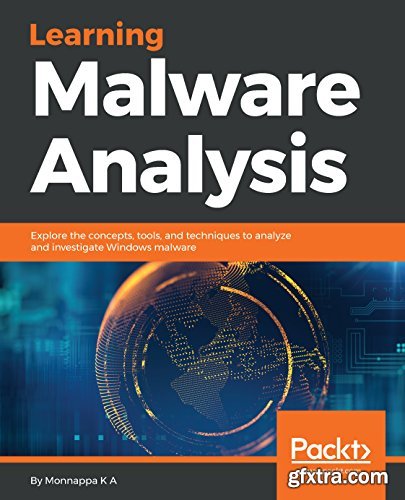
English | 29 Jun. 2018 | ISBN: 1788392507 | 510 Pages | EPUB | 14.17 MB
Key Features
Explore the key concepts of malware analysis and memory forensics using real-world examples
Learn the art of detecting, analyzing, and investigating malware threats
Understand adversary tactics and techniques
Book Description
Malware analysis and memory forensics are powerful analysis and investigation techniques used in reverse engineering, digital forensics, and incident response. With adversaries becoming sophisticated and carrying out advanced malware attacks on critical infrastructures, data centers, and private and public organizations, detecting, responding to, and investigating such intrusions is critical to information security professionals. Malware analysis and memory forensics have become must-have skills to fight advanced malware, targeted attacks, and security breaches.
This book teaches you the concepts, techniques, and tools to understand the behavior and characteristics of malware through malware analysis. It also teaches you techniques to investigate and hunt malware using memory forensics.
This book introduces you to the basics of malware analysis, and then gradually progresses into the more advanced concepts of code analysis and memory forensics. It uses real-world malware samples, infected memory images, and visual diagrams to help you gain a better understanding of the subject and to equip you with the skills required to analyze, investigate, and respond to malware-related incidents.
What you will learn
Create a safe and isolated lab environment for malware analysis
Extract the metadata associated with malware
Determine malware's interaction with the system
Perform code analysis using IDA Pro and x64dbg
Reverse-engineer various malware functionalities
Reverse engineer and decode common encoding/encryption algorithms
Perform different code injection and hooking techniques
Investigate and hunt malware using memory forensics
Who This Book Is For
This book is for incident responders, cyber-security investigators, system administrators, malware analyst, forensic practitioners, student, or curious security professionals interested in learning malware analysis and memory forensics. Knowledge of programming languages such as C and Python is helpful but is not mandatory. If you have written few lines of code and have a basic understanding of programming concepts, you'll be able to get most out of this book.
Table of Contents
Introduction to Malware Analysis
Static Analysis
Dynamic Analysis
Assembly Language and Disassembly Primer
Disassembly Using IDA
Debugging Malicious Binaries
Malware Functionalities and Persistence
Code Injection and Hooking
Malware Obfuscation Techniques
Hunting Malware Using Memory Forensics
Detecting Advanced Malware Using Memory Forensics
TO MAC USERS: If RAR password doesn't work, use this archive program:
RAR Expander 0.8.5 Beta 4 and extract password protected files without error.
TO WIN USERS: If RAR password doesn't work, use this archive program:
Latest Winrar and extract password protected files without error.


